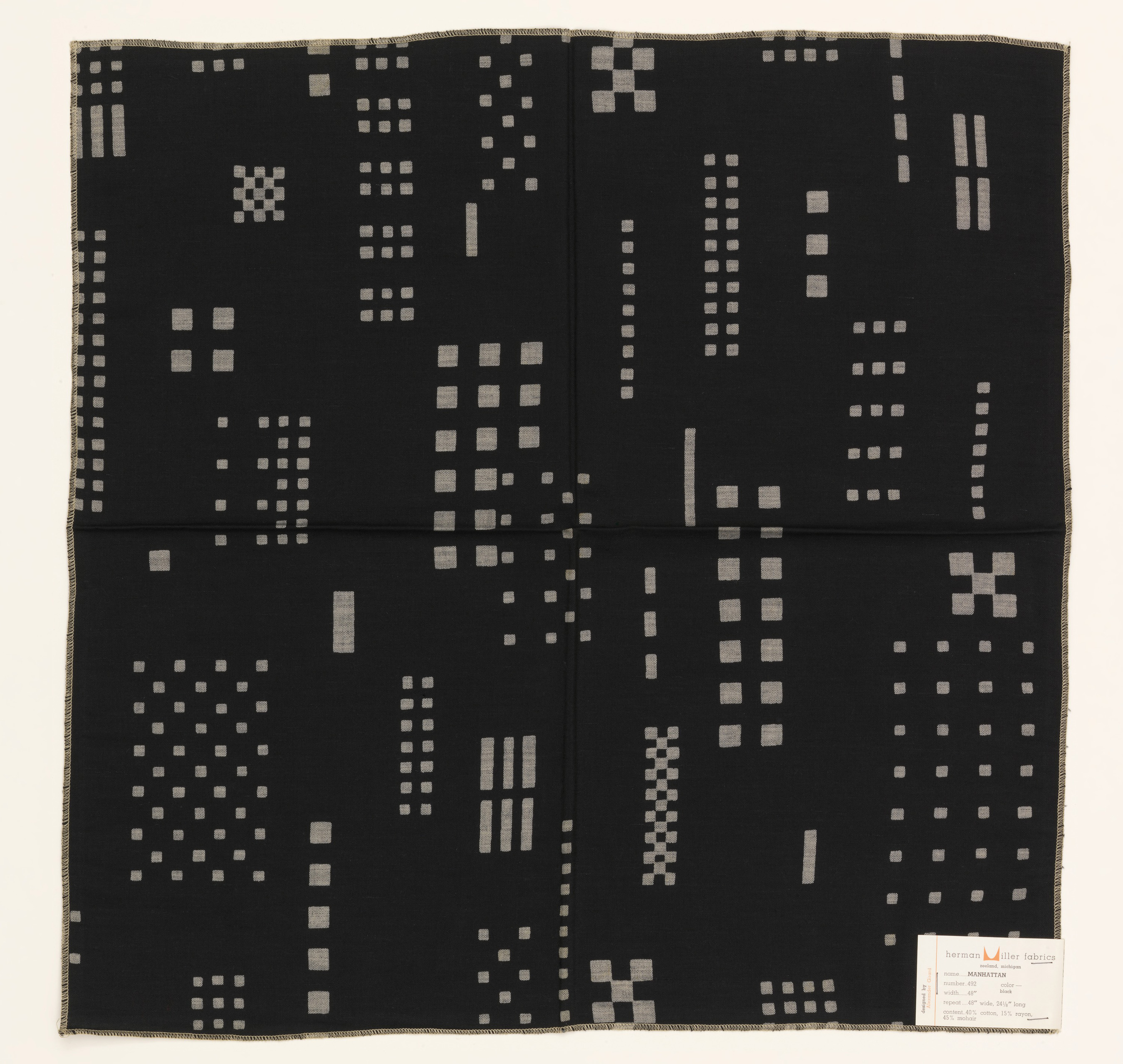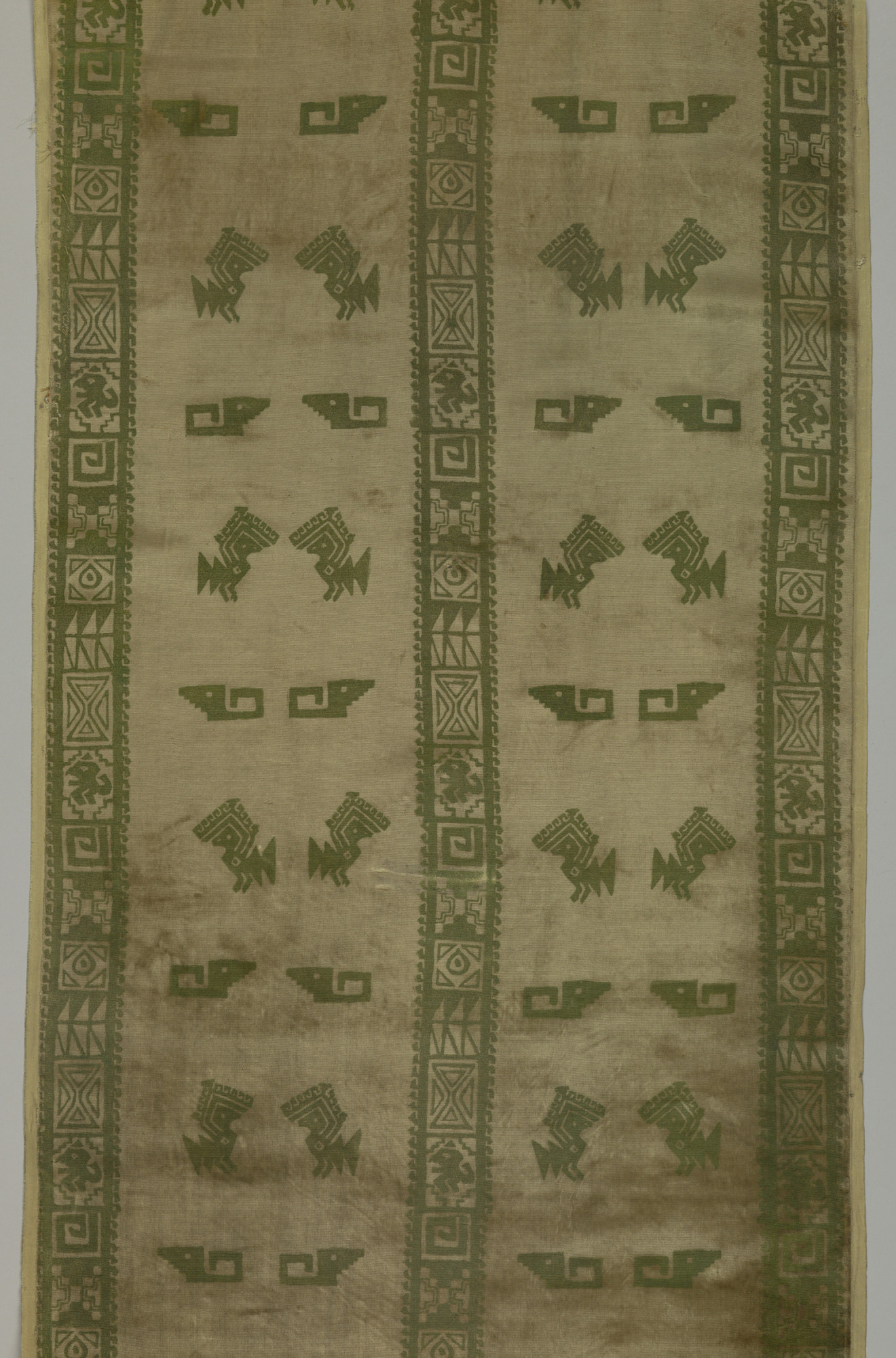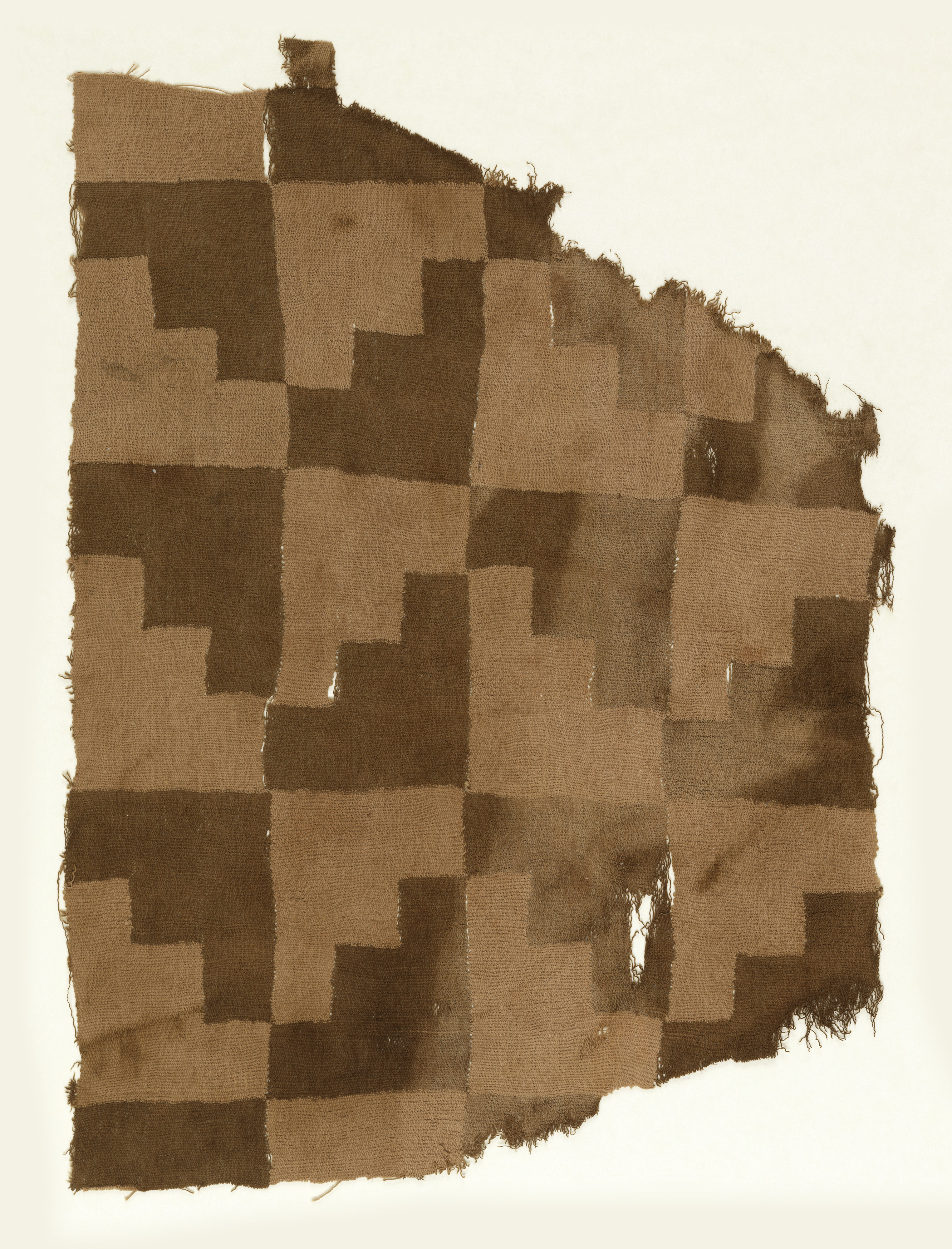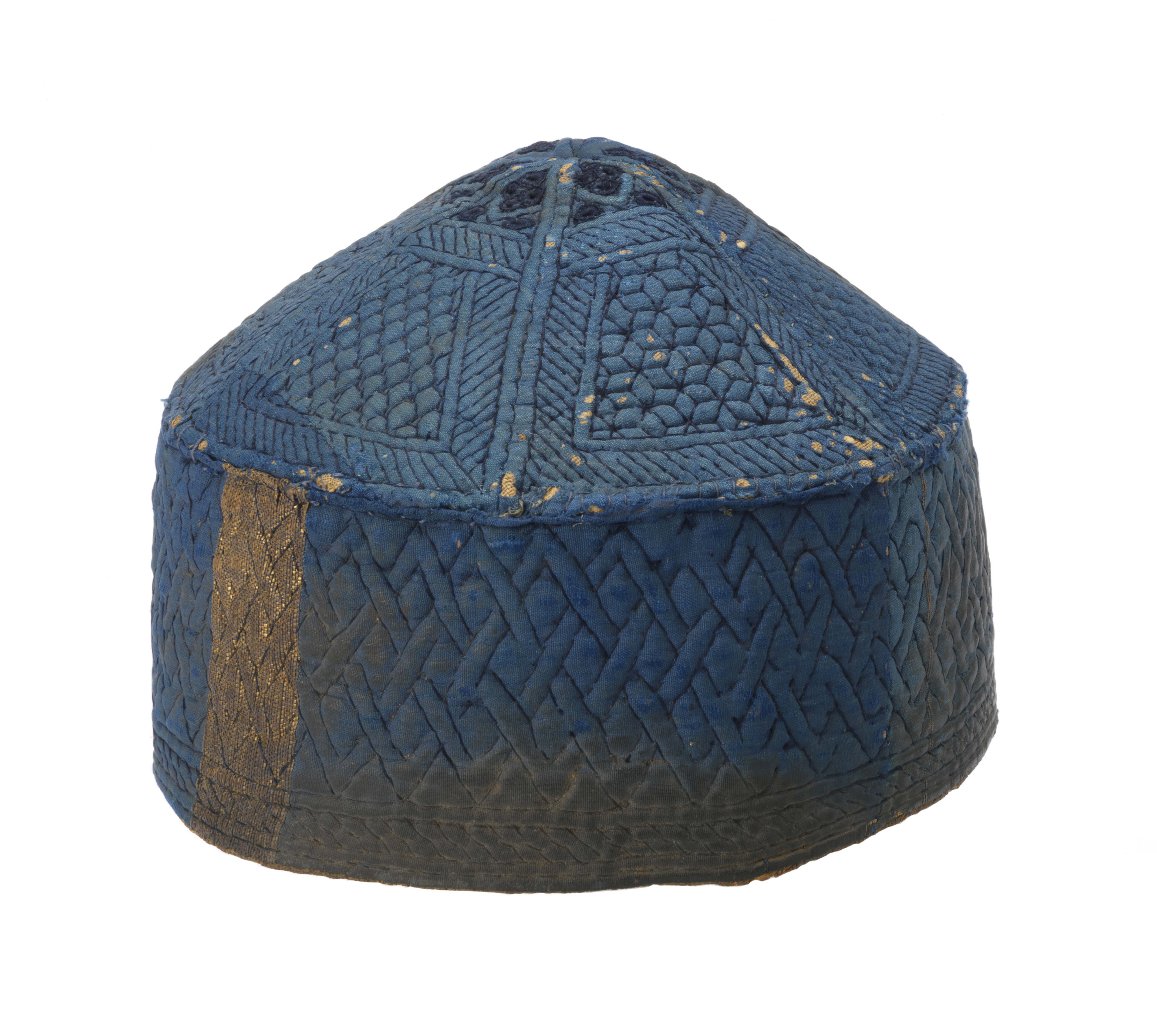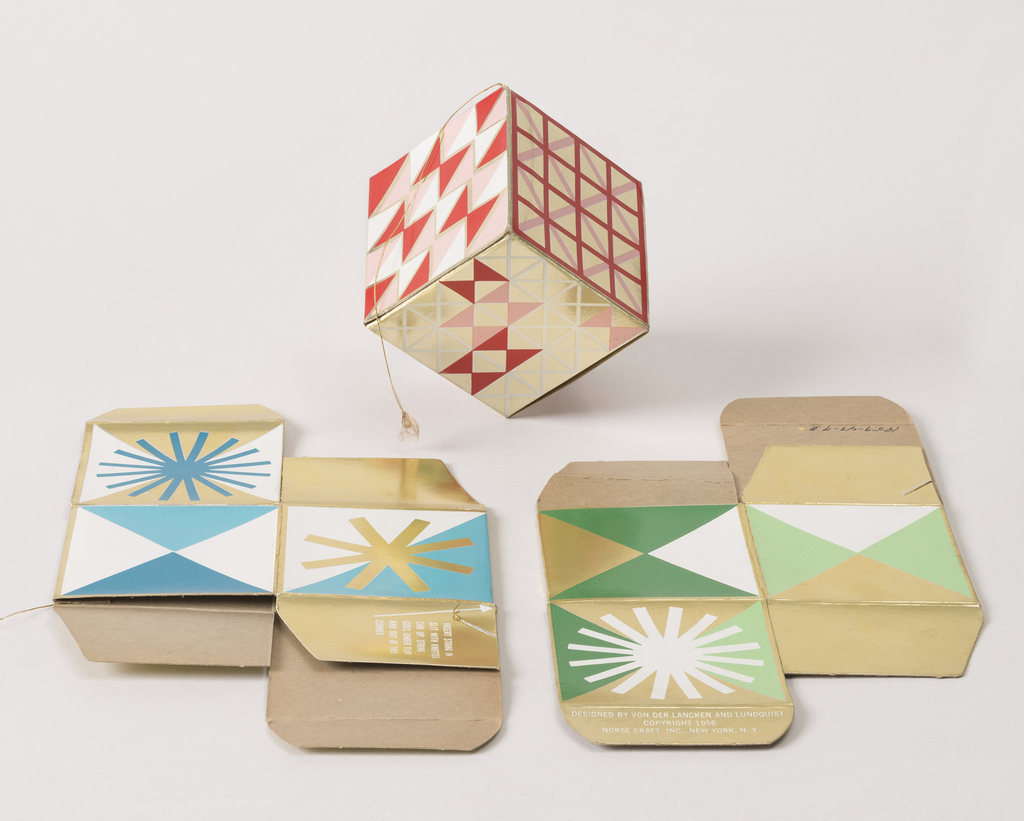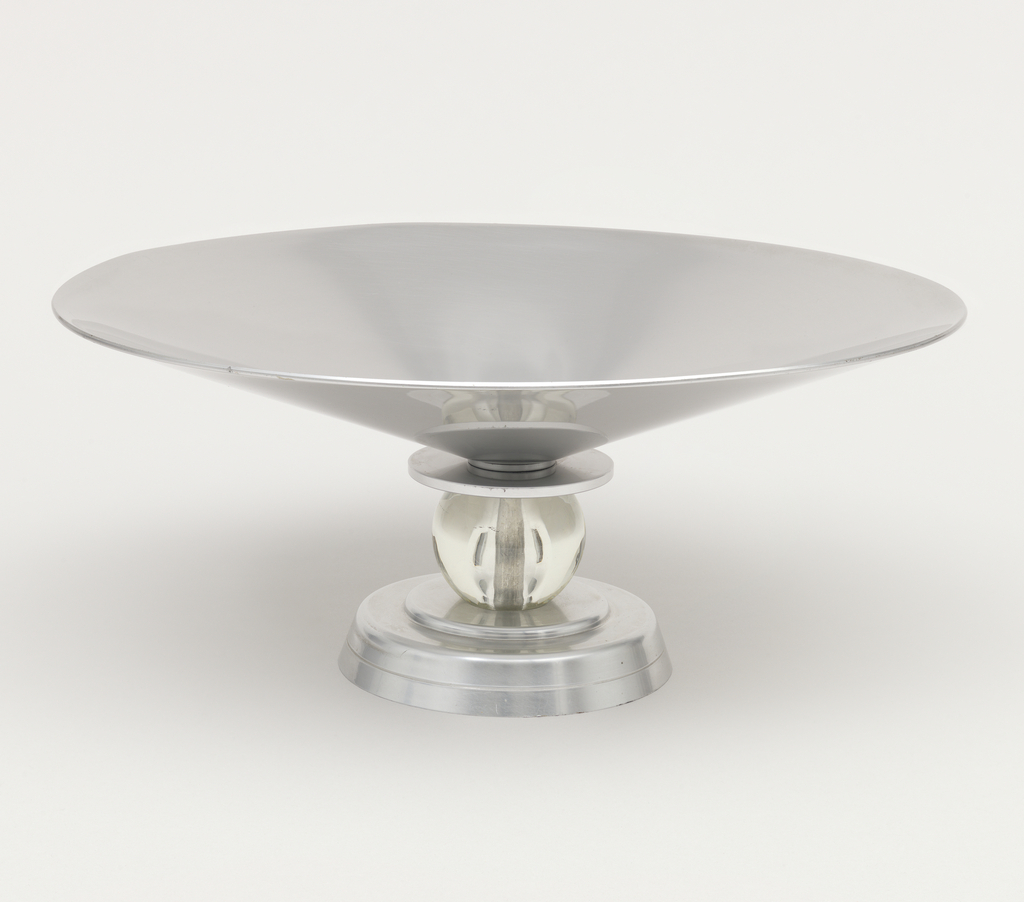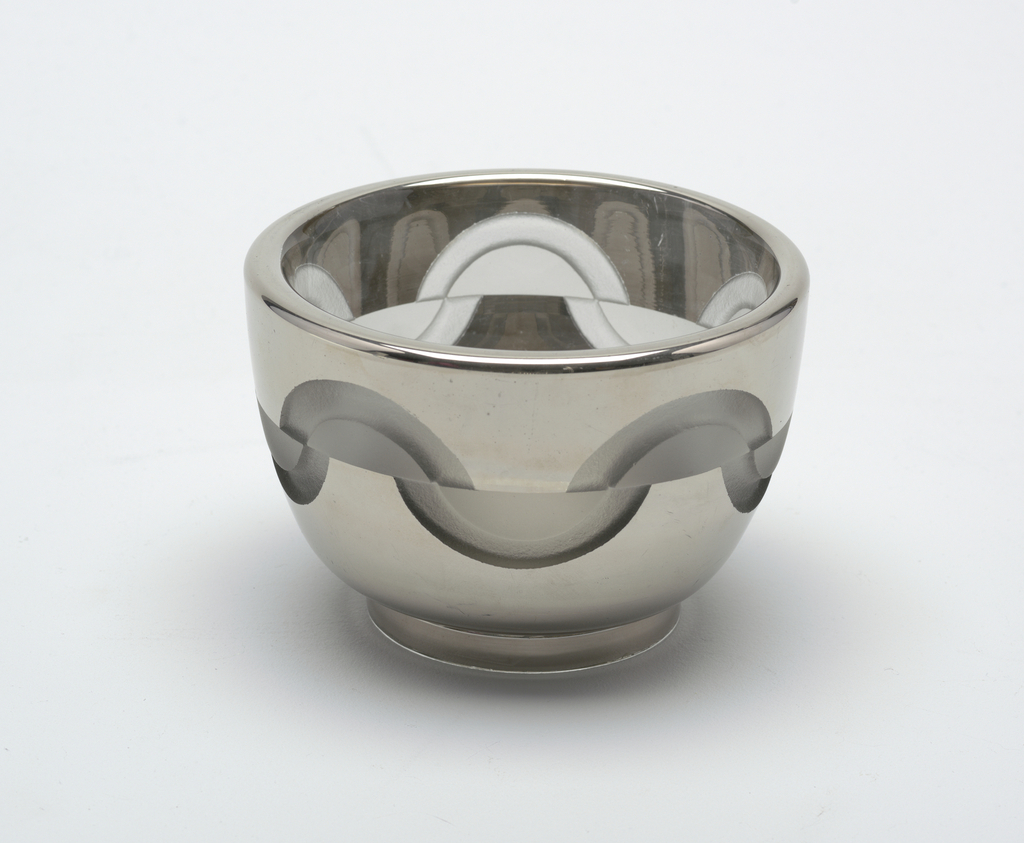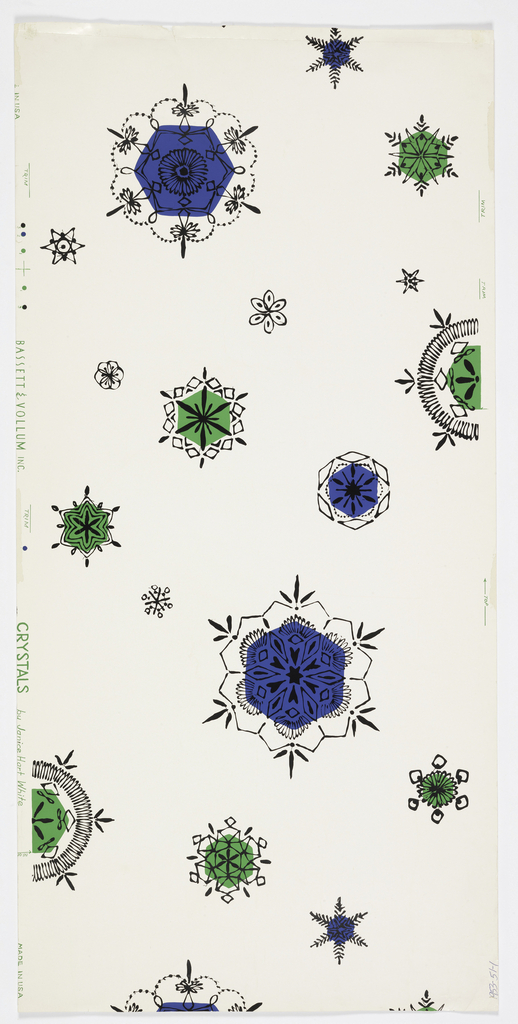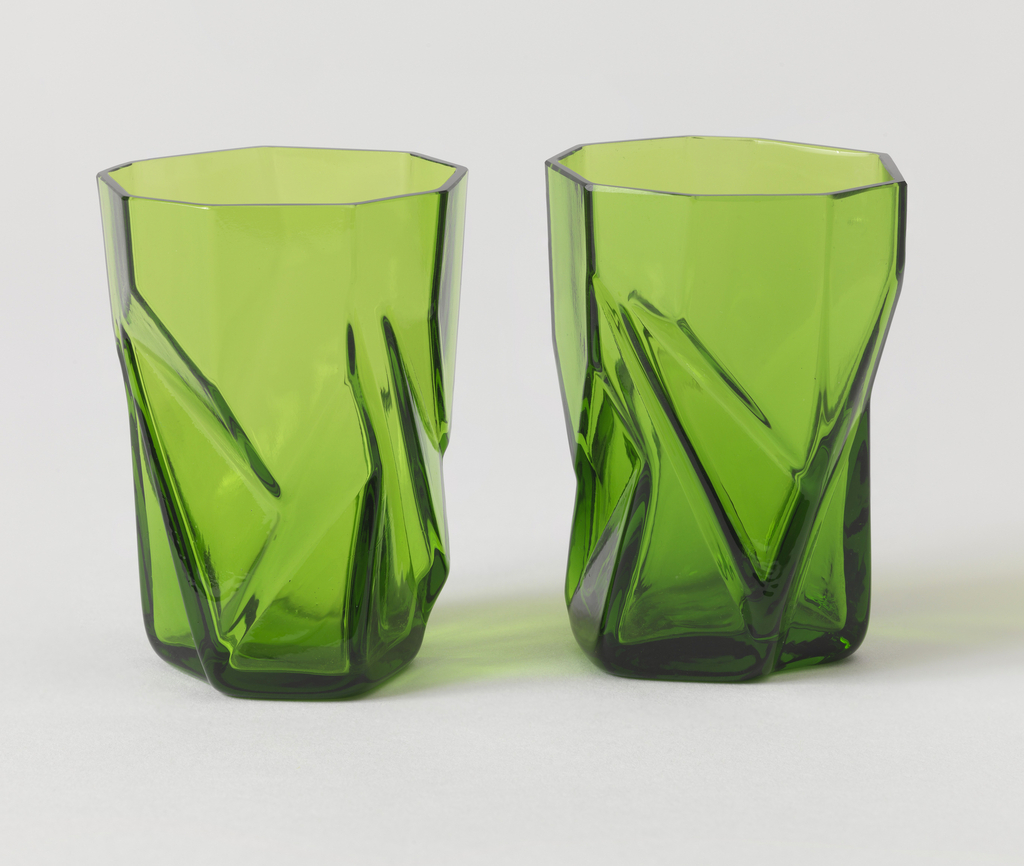Alexander Girard produced over 300 textile designs during his almost 30-year tenure at Herman Miller, an important American furniture company and promoter of modern design. That Girard was trained as an architect should come as no surprise—like many architects of his generation, he had experienced firsthand the challenge of finding textiles appropriate for a modern...
In 1972 Cooper Hewitt received a bequest of textiles from New York City architect and artist Julian Clarence Levi (American, 1874-1971). It mainly was comprised of French and Indonesian textiles, but also included two unusual velvet panels printed with pre-Columbian bird motifs and other forms. The design itself is rather simple and contains two vertical...
Andean cloth has many meanings. Some are expressed through complex iconographic representations, others employ a strictly geometric vocabulary. Another form of meaning comes from the materiality of the cloth itself and way it was made. This simple cloth is composed of interlocking stepped squares in contrasting colors. The duality of the design, like the Chinese...
This cap was used in Mamluk Egypt, a period during which textiles were perhaps the most precious items in Islamic society. Its finely-woven blue silk fabric is interlaced with ‘strap gold’: strips of membrane coated with real gold foil, making it among the most expensive and desired fabric types in Egypt at this time. The...
These cubic cardboard ornaments are just the thing for an atomic holiday. Designed in 1956 by Van der Lanken and Lundquist and manufactured by Norse Craft, Inc., they were exhibited the next year at the 3rd annual American Package Design Competition held at Cooper Union and were subsequently given to the museum’s collection. A modern...
It is no coincidence that many of Lurelle Van Arsdale Guild’s 1930’s designs for aluminum tableware reflect his honed knowledge of traditional forms and ornament. Before becoming one of America’s top industrial designers of the early to mid-twentieth century, Guild was an antique furniture dealer and throughout his entire life, a collector and connoisseur of...
This sweet little glass bowl evokes the shining, art deco optimism of the 1930s. Designed by Jean Luce and exhibited at the 1937 Exposition Internationale des Arts et Techniques dans la Vie Moderne, it speaks to the period’s interest in democratic materials and tells a story of increasing simplicity of form and decoration in design....
This seemingly seasonal sidewall was conceived by American designer Janet Hart White for Basset & Vollum, Inc. in 1953. Polygonal shapes of various sizes are outlined in black and scattered across a cream colored ground. Hexagonal medallions in bright blue and green highlight the intricate radial patterns contained within the polygons. For most of us,...
Introduced at the 1928 Pittsburgh Glass and Pottery Exhibit, designer Reuben Haley’s Ruba Rombic forms epitomize the geometric style and ideals of American Art Deco. The Art Deco style, popularized by the 1925 Exposition Internationale des Arts Décoratifs et Industriels Modernes in Paris, which likely also inspired Haley, is often characterized by jagged lines and...
